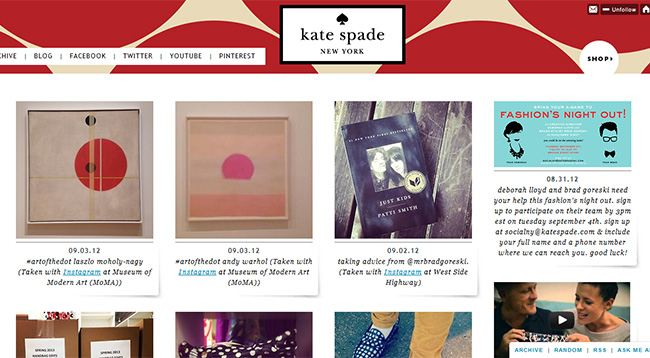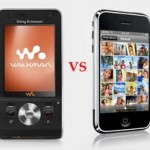There are so many businesses throughout the country, often times the smaller ones are overshadowed by the larger ones. However, we cannot forget the little guys, the businesses who are kicking butt, but just aren’t all over our radar as Microsoft, Apple or Verizon may be. These small businesses are utilizing social media such asFacebook and Twitter to keep their target audiences well informed of their product/service and are showing it’s not about the deep pockets completely, it’s also about the dedication and putting your all into a company/business you love and of course using the tools at your fingertips to reach your audience.
Here are five of my picks for small businesses utilizing Facebook and Twitter like they own it!
(1) Notch Session Beer: Founded by Chris Lohring of Salem, MA, Notch provides low ABV % beer for those who love a great tasting beer, without falling off their stool after drinking. Not only has Notch provided a killer tasting beer, but it has done a great job at going the extra mile with their social media resources. For example on Twitter, Notch does not just post about their beer constantly and ad nauseum. They provide fun facts, news, and invite their fans to in-person events to try the beer at local pubs (aka a “session”). Thus, Notch does a great job at utilizing Twitter to promote live events and engage audiences on and offline. In my opinion, Notch is just beginning, watch out folks, and don’t spill that beer!
2) Naked Pizza: A “natural” pizza offering with 10 grains and probiotics and more. Who knew pizza didn’t have to be all bad for you? That’s a great excuse to indulge in my opinion. And aside from the fabulous pizza, Naked Pizza has shown that social media can spread news like wildfire and arouse the awareness of both potential and current consumers. For example, when Naked Pizza was looking to open up in Dubai (spreading its wings), they decided to actually “talk” to people (in person and via social media such as Twitter) and get their thoughts and opinions on food and health. The idea of consumer involvement is not new, but it’s essential to the success of companies and their products/services. Consumers love to be involved and share their opinions and they will find a way to do it, even if you don’t give them that avenue personally. So, why not (like Naked Pizza) immerse yourselves with the consumers and find out what they really want. In the mean time, check out this cool video of how Naked Pizza did it via Twitter.
3) Coffee Groundz: A coffee shop that understood the awesomeness of free Wi-Fi and embracing tech and social like Facebook and Twitter. The coffee shop quickly became for social-media-aholics and the like due to the atmosphere, the culture, and of course, the coffee. This coffee shop does not just provide a great venue for drinking coffee, doing work, and catching up with friends, it also allows you to keep posted on what’s going on with the shop via Facebook and Twitter. For example (as seen below) they post events such as musicians who will be at the coffee shop. Like the Facebook page? Love that musician? Attend the event? Buy some coffee (or other yummy item)? I think that sounds like some fabulous Facebook ROI.
4) Roger Smith Hotel: The Roger Smith Hotel in midtown NYC is known for its devotion to the arts and embracing social media, and as of late become a go-to hotel for many social media VIPs and geeks alike. Why wouldn’t you want to stay at a hotel which embraces social media, has a great roof deck and a staff which is not just polite, but inviting, gracious, and off the charts engaging with each and every person who walks into the hotel (either in person or via Twitter, Facebook etc). Not only do they useTwitter to interact, but there are special Twitter rates available for rooms. Awesome ROI and perks! I have also had the personal pleasure of meeting Adam Wallace, Director of Digital Marketing at Roger Smith, and can say without a doubt, that Adam, along with others at RS are dedicated to how social media touches each potential and current consumer, as well as in person. Have questions, hit up @rshotel and ask away.
5) Krista Photography: Krista, a Boston wedding photographer is not only delightful in person, but her photography is thrilling to view. She captures the emotion of every wedding, child, and special event in each individual photo. Impressive and breath-taking at the same time. And as a smart businesswoman she realizes the potential of utilizing social networks to show her photography, engage further with current clients who like seeing their pictures online, and illustrate to potential consumers that she is the photographer they want, and the pictures tell all. When looking on her Facebook Fan Page, you can see some great visuals of weddings, head shots, and more. Krista realizes that Facebook is not just for chatting with friends anymore, but a great tool to for her consumers to view, discuss, and comment on her work.
After delving into these intelligent and great businesses above and how they have dedicated themselves to utilizing social media to further their awareness, engagement, and conversion of people to customers I am inspired and look forward to seeing how these businesses continue to grow via their social media efforts. Now I have a desire to pick up a camera, grab a pizza, a beer, coffee, and chill on the roof deck of a great hotel.
Note: this post was originally written for oneforty, which was acquired by Hubspot.








 “Within the next decade, smart-device swiping will have gained mainstream acceptance as a method of payment and could largely replace cash and credit cards for most online and in-store purchases by smartphone and tablet owners, according to a new survey of technology experts and stakeholders.”
“Within the next decade, smart-device swiping will have gained mainstream acceptance as a method of payment and could largely replace cash and credit cards for most online and in-store purchases by smartphone and tablet owners, according to a new survey of technology experts and stakeholders.”































